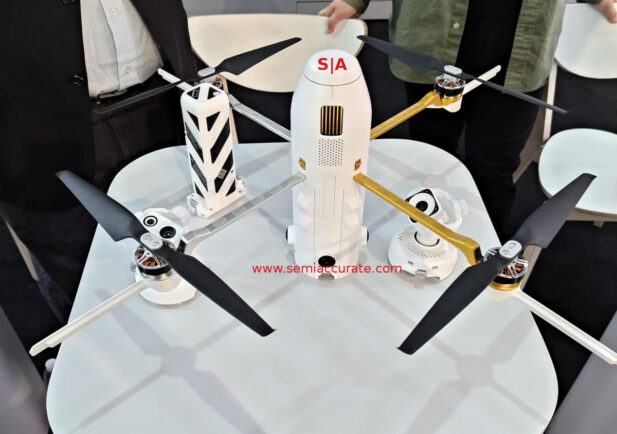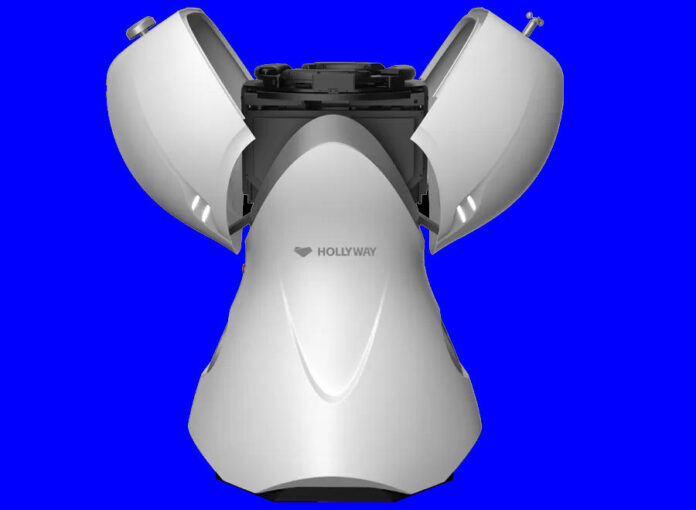Hollyway was showing off a rather unique drone system at MWC this year. SemiAccurate feels that they were the one company who has thought things through from end to end.
At tech trade shows, drones are a common site with everything from micro-drones to Ukranian Baba Yagas making appearances recently. This time around, Singaporean company Hollyway was showing off industrial drone systems with a twist, they aren’t hideously ugly. Actually the Hollyway drone systems are quite pretty and they thought things through from an end to end perspective. If you don’t believe me, take a look at their docking station.

This dock looks good and dances
What you see here is the docking pod from their Iron Series devices. Each dock carries one drone, three batteries, and four battery slots. That bit is important because the Hollyway drones are really a system, not a single device. Better yet several docks and drones can work together to provide a much more powerful system.

Industrial drones don’t have to be ugly
Starting off with the drone, the Hollyway version is relatively standard vertical format drone. The striped rectangle in the back is the battery that slots up the middle of the drone itself with two modular cameras on either side. There are video, IR, and loudspeaker pods that clip on below the battery. Transmissions from the drone can be 4G/5G or direct microwave communications.
As is the mandatory feature of any recent device, drone or otherwise, Hollyway says their drones sport 100TOPS of compute for, well, whatever you want it to do, *COUGH* AI. The drones have internal obstacle avoidance up to a claimed 50m, a necessary feature for essentially autonomous drones. This is on top of the camera and comms features, if you depend on the camera module to avoid things, using the loudspeaker module won’t lead to long lifespans.
The interesting bit comes when you look at the capabilities added by the docks. Each drone has a claimed 50 minute flight time and a range of about 15km, nothing too special there. When the battery is running low, the drone returns to the dock and it swaps the dead battery for a charged one, this is all done autonomously. Remember three batteries, four slots so if you can charge a battery in less than 3x50m, you have essentially 24/7 operational capabilities. Hollyway say this is the case if you ignore the ~1 minute battery swap time.
If that isn’t enough you can set multiple docks up and have drones dock and replace the battery at a dock that it didn’t launch from. Instead of 50 minutes being 25 out and 25 back, you can place your docks 15km apart and hop from one to the other. Realistically a drone will probably take a meandering path and spend time at specific locations, but you get the idea. With the Hollyway system, a fleet of drones covering a wide area essentially 24/7 is quite feasible.
Since everything can be automated, you can just fire and forget, set a route, points to be inspected, and sit an intern down to watch the data feeds. It seems like a really smart system to constantly inspect or patrol a large area without needing a lot of operator intervention. Better yet, Hollyway made their drones and the carrier look nice, something far too few companies do. Instead of calling in complaints, parents could bring their kids to watch the mechanical ballet of the carrier opening, the drone docking, and the battery swap. Industrial doesn’t have to be hideous.S|A

